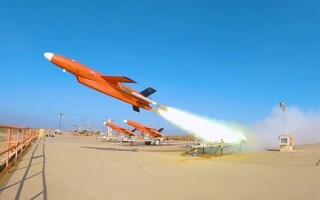AI, real-time data processing are major themes at MOSA Summit
NewsJune 17, 2024

NATIONAL HARBOR, Maryland. Artificial intelligence and real-time data processing technology are front and center at this year's MOSA Industry & Government Summit, with several companies showcasing technologies aimed at helping warfighters make better decisions in the field by processing data faster and using AI to sort through it.
For example, Aitech demonstrated its U-C5300 multi-head GPGPU graphics board, specifically designed for advanced AI delivery, video analytics, and image processing. This board is intended to enhance real-time video processing to help with decision-making and situational awareness on the battlefield.
Abaco Systems, meanwhile, announced the launch of a new single-board computer that uses AI for edge computing in autonomous and embedded systems within military applications. And Annapolis Micro Systems showcased a Sensor Open Systems Architecture (SOSA) Technical Standard aligned demonstration featuring FPGA generators and RFSoC components — a setup designed to handle complex signal processing tasks at high speeds.
Also, Curtiss-Wright — in collaboration with partners Wind River, Ansys, and CoreAVI — demonstrated a FACE conformant digital cockpit flight display. This system uses advanced processing units to manage multiple data streams in real-time to help with mission-critical aerospace applications.
These technologies and more at the MOSA Summit indicate a growing reliance on AI and real-time data processing. DoD officials are increasingly placing an emphasis on data-processing technologies because they allow for rapid interpretation and response to dynamic situations, while AI amplifies this capability by providing faster, data-driven decisions on the battlefield.
AI algorithms improve as they process more data, and the speed of real-time systems ensures that these algorithms receive a continuous stream of information to analyze. This combination can be particularly helpful in denied, degraded, intermittent, or limited (DDIL) environments, where traditional data handling and decision-making methods cannot keep up.





